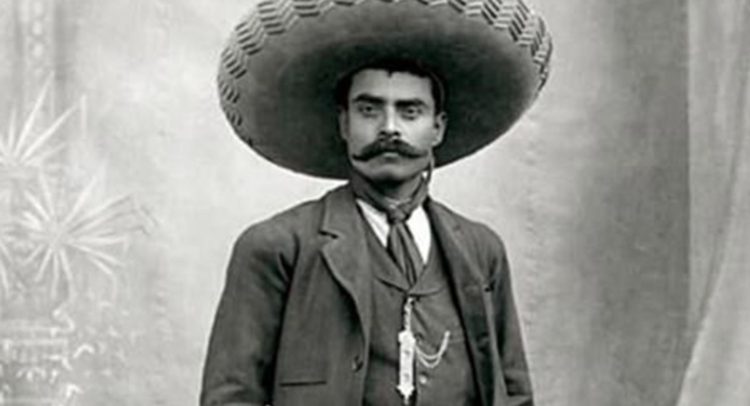In 2019, Mexico observes 100th anniversary of Gen. Emiliano Zapata’s death…//
For General Emiliano Zapata Salazar, the objective was clear: to confront the oppressive government of Porfirio Diaz or to die striving for the justice of Mexicans who were being deprived of their lands. Therefore, his character is associated with the peasant struggle, indignation and uprising against the State.
One hundred years after his assassination, Mexico remembers and resurrects the “Caudillo del Sur” for the sake of victory; especially, the new government, which has taken him as a symbol for its ideals.
But what makes Zapata such a fascinating character for those who use him as a banner of freedom? Why is the figure of this man born in Anenecuilco, Morelos, still current? Is he not more myth and legend, and has reality been left aside?
“I think Zapata is very interesting, because he is one of the revolutionary leaders who never became corrupt, he was never absorbed by power, that distinguishes him,” said Pablo Piccato, a professor in the History Department at Columbia University.
The academic explained why the admiration for Zapata transcends generations, turning him into a new pop icon, as well as that his centenary of mourning is a reason to investigate more about the life of the leader.
On August 8, 2019, 140 years of his birth will be commemorated, and on April 10, the 100th anniversary of his death in an armed ambush.
THE INSTITUTIONALIZATION OF THE REVOLUTIONARY
Despite the fall of the revolutionary, his legacy would continue with his army. At that time, rumors began to spread that Zapata was still alive, and so began the legends that would accompany the myth to the present.
“Then we have the movement of Chiapas, in 1994, which transformed Zapata’s myth a bit into this symbol of an indigenous, anti-authoritarian and armed rebellion, not so much focused on the issue of lands,” Piccato recalled, speaking of the Zapatista Army of National Liberation.
The Chamber of Deputies is working on a project for the issuance of the “Emiliano Zapata” medal for social activists.
For the professor of History, the fact that the new federal government decides to commemorate Zapata’s death centenary in a big way, forces it also to rescue the values and ideas of the Revolution.
“Zapata works in this way of invoking the continuity of the revolutionary tradition, of saying ‘this government is the heir of that movement’, in some way, but that is not through the history of bronze, of the PRI, of all that tradition which had appropriated the character, but in a more direct way and that involves action of society,” said the expert.
MOMENT OF KNOWING ZAPATA
Is there an idealization around the revolutionary? Is questioning his figure before the story? On the occasion of the 100th anniversary of the assassination of the “Caudillo del Sur”, Piccato believes that it is the ideal time to thoroughly explore this peasant turned social fighter.
“It’s fine to celebrate a character that we consider important, but part of that celebration, in my opinion, should include studying it, learn more than what he did, publish the works that have been written about him,” the scholar said by telephone.
As an academic, Piccato acknowledged that there is a broad bibliography of the caudillo, so it would be fair to make all this material visible, so the revolutionary, even, could cause more repercussion in the present.
“There are very good history books about Zapata, you have to make them accessible to the readers. That people know more about him does not mean that Zapata loses interest, on the contrary, as long as the public knows more about what he did and the world in which he lived, the more interest there will be,” said the historian.
THE NEW CHE GUEVARA?
Zapata, whether as an ideology, symbol or character, has impacted beyond the borders of Mexico, because he has become a cultural icon, the image of a lover of freedom and an example to follow for different reasons.
“What does Zapata mean on a kid’s shirt in Europe or in Africa or in the United States? Who knows, as it happens with the image of Che Guevara, they change their meanings according to the way they are appropriated by different audiences,” commented Piccato.
The Mexican citizenship, the professor believes, resurrects Zapata for what is happening in a convulsive present, in a country that demanded a change of power and where the majority obtained a leftist party, 100 years after the death of the “Caudillo del Sur.”
Text and photos: Agencies










